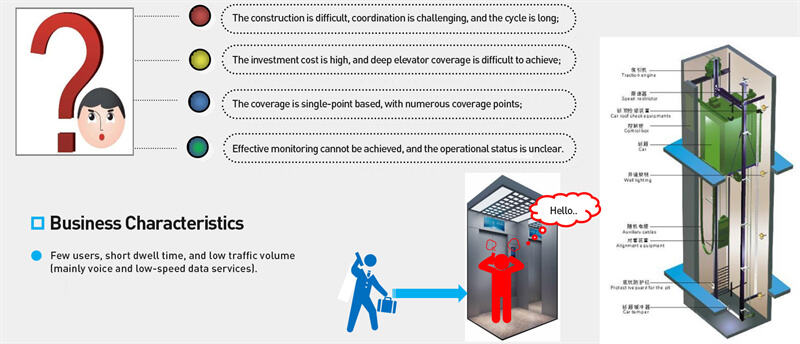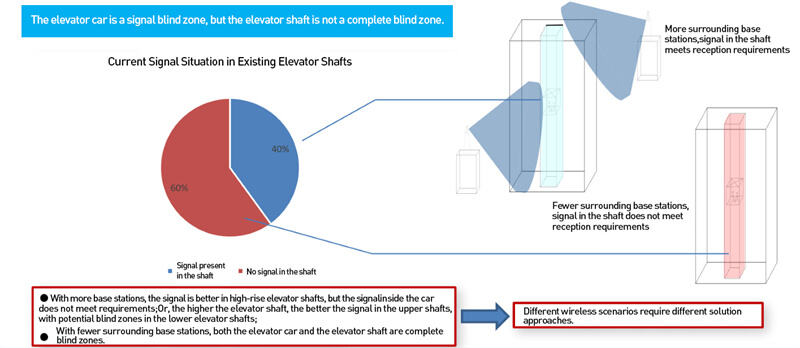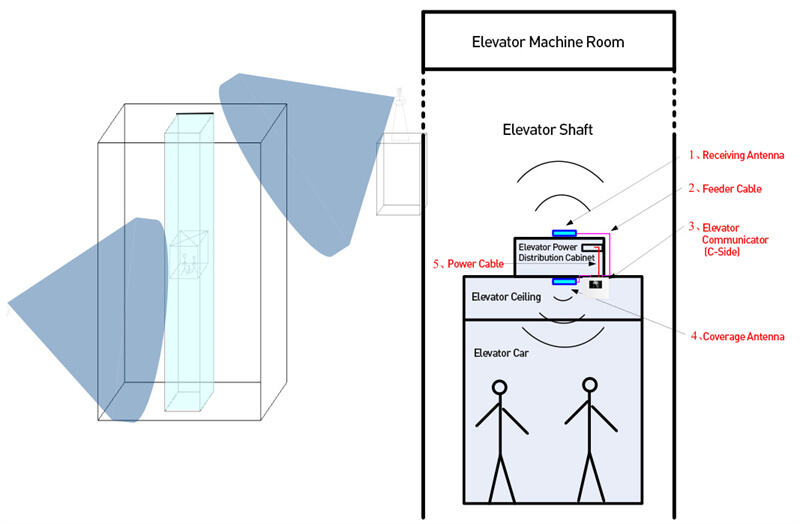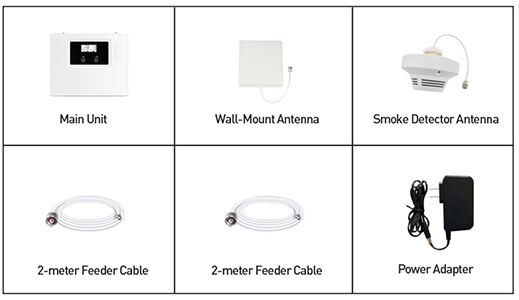

Due to the severe shielding of outdoor signals by elevators, most areas inside elevators are weak signal zones or blind spots, which seriously affects the service quality of operators. Therefore, signal coverage in elevators has become a key and focal point of overall signal coverage, and the quality of elevator signal coverage has also become an important part of operators' core competitiveness.
However, the currently mainly adopted distributed coverage method features high costs, long construction cycles, and lack of effective monitoring, leading to degraded performance after long-term operation. Hence, there is a need for a solution that can reduce costs, achieve good coverage, effectively monitor signal conditions inside elevators, and simultaneously cover 2G, 3G, and 4G signals in elevators.
Distributed Elevator-Type Mobile Phone Companion (A+B Terminals)
• Red Dot: Difficult construction, coordination challenges, and long cycle.
• Yellow Dot: High investment cost and difficulty in deep coverage of elevators. Blue Dot Single-point coverage with many coverage points.
• Green Dot Inability to achieve effective monitoring, and unclear operation status. Business Characteristics
· Few users, short stay time, and small business volume (mainly voice and low-speed data services).

Distributed Elevator-Type Mobile Phone Companion (A+B Terminals)


1.Easy coordination with property
2.management, and can be activated within 10 minutes
3.Meets the needs of normal calls
4.Low cost
5.Supports dual-mode signals of 2G/3G/4G
The signal in the elevator shaft meets the starting control requirements for elevator communication, and the elevator type mobile phone companion (Terminal B) can be used for simple coverage.
Distributed A+B Terminal Coverage
For high-rise buildings where the signal in the elevator shaft does not meet the activation requirements of the Elevator-Type.
Mobile Phone Companion (Terminal B), a relay coverage solution using distributed (Terminal A) + (Terminal B) is adopted.


A Terminals

B-Side

Product Parameters
| Product Function | No Dead-Zone Coverage of Elevator Signals |
| Frequency Configuration | CDMA0.8/GSM0.9/FDD1.8/W2.1/LTE-D/F OptionalCombination |
| System Gain | 65-70dB/70-75dB/70-80dB |
| System Power | 20dBm/23dBm/27dBm |
| Noise Figure | Maximum Gain ≤6dB |
| In-Band Ripple | ≤6dB |
| Third-Order Intermodulation | ≤-42dBc |
| VSWR (Voltage Standing Wave Ratio) | ≤2.5 |
| EVM (Error Vector Magnitude) | ≤2% |
| RF Interface | SMA-K |
| Product Size | 230x150x33mm |
| Weight | ≤1Kg |
Product Functions and Features
● Fully intelligently display faults detected by the device and provide corresponding solutions;
● The intelligent software inside the device detects the distance between the donor antenna and the retransmit antenna, fulfilling the functions of isolation detection and self-excitation elimination;
● Fully intelligent adjustment of the device's amplification factor (AGC), with uplink and downlink gain linkage and an adjustable range of up to 55dB;
● A high-speed digital ALC system is integrated inside the device;
● Automatically turn off the uplink when strong self-excitation is detected; effectively protect the base station from interference;
● Automatically balance uplink and downlink gains to ensure clear, smooth user calls without interruptions;
● Equipped with different output power levels to meet various coverage requirements; power level selection is available for 4G when the device is powered on;
● High-performance aluminum shielding case and aluminum heat sinks, which significantly enhance anti-interference capability and the product's heat dissipation function;
● Fully intelligent display and indicator light display mode; no professional training is required for installation and activation; operations can be completed according to on-screen prompts; providing the most convenient and simplest installation solution in the entire network.
Network Management Functions
● Local debugging uses WIFI to connect to a mobile phone APP for query and parameter setting;
● Remote network management monitoring uses wireless data backhaul to access the operator's network management platform through the web terminal for query and parameter setting.